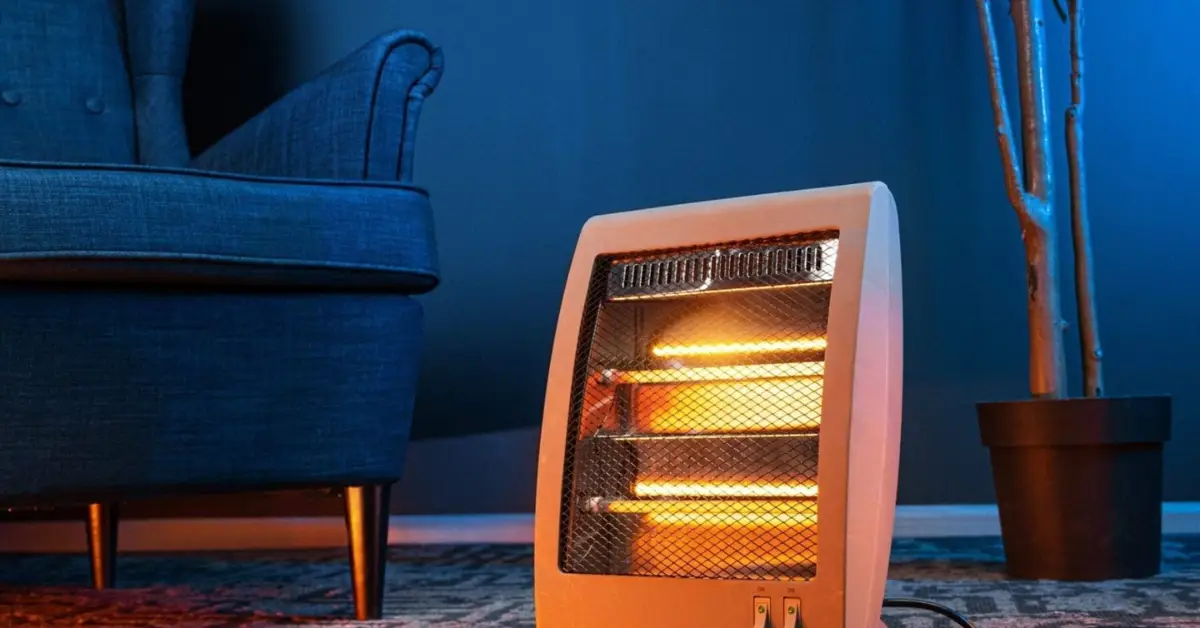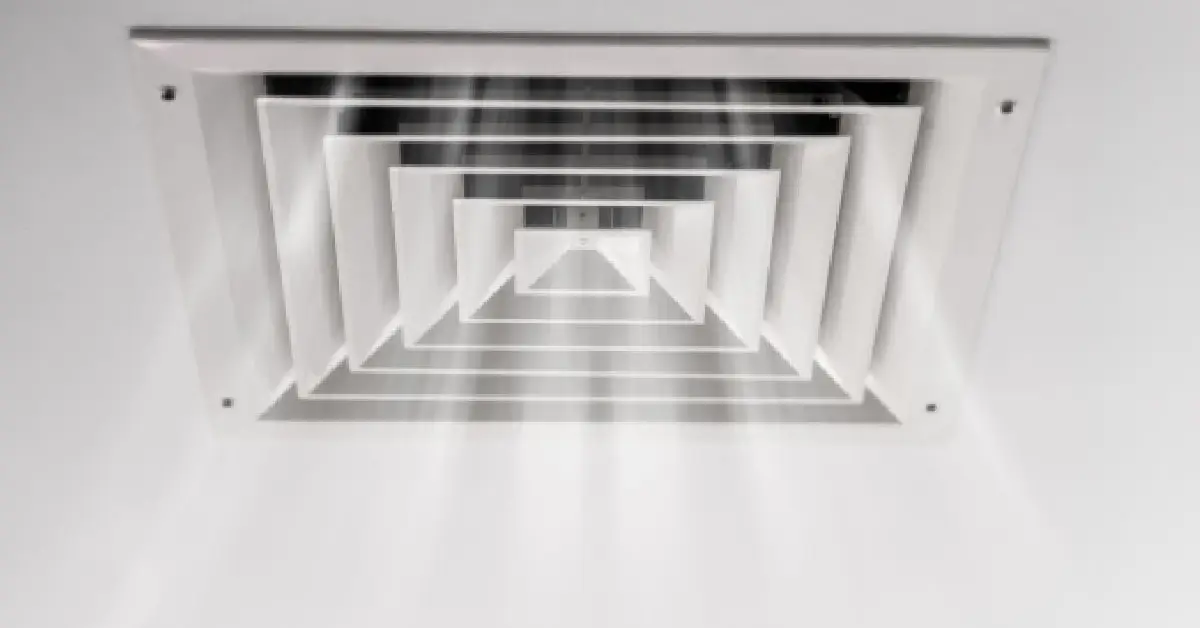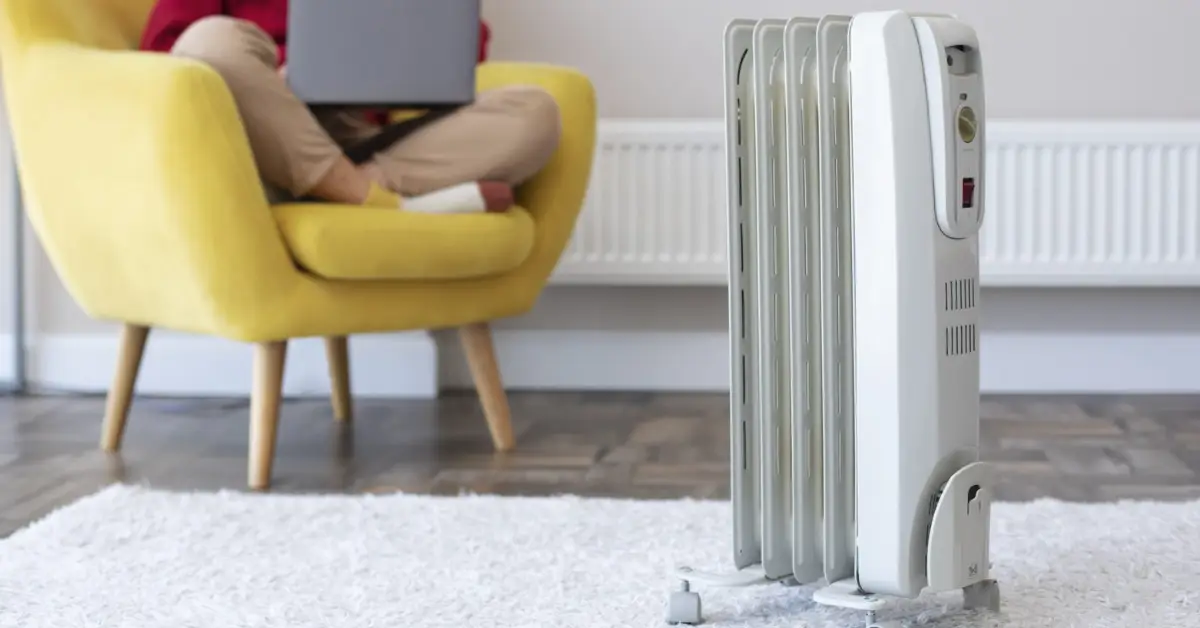Top 10 Space Heater Mistakes Every Homeowner Must Avoid This Winter
I’ve spent time reading what experts, consumer sites, and fire-safety guides say about space heaters — and I noticed the same things keep coming up: useful warnings, a few technical tips, and a lot of vague advice that leaves you guessing when it matters most. I wrote this piece to cut through that noise and give you clear, practical moves you can use tonight to keep your home safe and your heating bills from spiking.
You probably use a space heater because it’s fast, cheap, and handy. I get it — I use them too. But what I don’t accept is the “it’ll be fine” shrug that leads to the most common, avoidable mistakes: wrong wiring, bad placement, skipping certification checks, and treating heaters like furniture. Those are the exact errors I’ll show you how to stop, step by step.
This article isn’t a list of obvious rules you’ve heard before. I dug into top articles, safety reports, and real homeowner threads to find where advice is missing or misleading — and then I built simple fixes you can apply right away.
Ready? Let’s start with the first mistake almost every homeowner makes — and the exact, low-effort fix you can do in under five minutes.
Mistake 1: Skipping the Safety-Certification Check
Let’s be honest — most of us grab a space heater because it looks good, fits the budget, or has great reviews. But the one thing we almost never look for? The safety certification label.
When you see markings like UL (Underwriters Laboratories), ETL (Intertek), or CSA (Canadian Standards Association), it means the product has passed independent electrical and fire-safety testing. In short, it’s been built to survive the heat it produces.
I’ve tested enough home gadgets over the years to know that uncertified heaters are a gamble — they may work fine until one day the cord melts or a switch fails. Many budget or imported models skip certification to cut costs, and that’s where danger creeps in.
Here’s how you can check before buying:
- Look for the UL/ETL/CSA mark printed on the plug, tag, or heater body.
- Verify the model number on the certification body’s website (it takes 30 seconds).
- Be cautious of listings with blurred or missing labels in product photos.
You don’t need to spend extra to get certified safety — you just need to look closely before you click Add to Cart. It’s the simplest way to avoid bringing a potential fire hazard into your home.
Mistake 2: Plugging Into Extension Cords or Power Strips

If you’ve ever plugged your heater into a power strip because the wall outlet was too far away — you’re not alone, but you’re also taking a big risk. Space heaters are high-draw devices, typically pulling 1,500 watts (12–15 amps) of current.
I’ve seen this happen firsthand — melted plastic, scorched carpet, and that sharp electrical smell that lingers for days. Extension cords and multi-outlet strips simply aren’t designed for the continuous power a heater demands.
Instead, do this:
- Plug your heater directly into a wall outlet — no adapters, no daisy-chains.
- Check that the outlet isn’t loose or warm to the touch after a few minutes.
- Keep the circuit dedicated (avoid running other big appliances on the same line).
A space heater doesn’t forgive electrical shortcuts. Treat it like a mini-oven on a cord — it deserves its own safe power source.
Mistake 3: Placing the Heater on Unstable or Flammable Surfaces
You’ve probably seen people drop a heater on a rug or perch it on a couch arm “just for a bit.” I’ve done it myself — until I realized how dangerous that habit is.
According to Martha Stewart Living, the most common household fire triggers involve placing heaters on soft or uneven surfaces like carpets, bedding, or furniture. These materials trap heat and tip over easily, especially with pets or kids running around.
When a heater tips, the hot front grill can land face-down on fabric — and that’s when seconds matter.
Here’s the safer setup:
- Always place it on a flat, hard, non-combustible surface (tile, hardwood, concrete).
- Keep at least three feet of clearance around it — front, sides, and top.
- Never balance it on unstable stands, tables, or stacked boxes.
I like to think of it this way: if the heater fell over right now, what would it land on? If the answer isn’t “nothing that burns,” move it.
Safety doesn’t have to mean overthinking — just using common sense before comfort. It’s the fastest fix you can make tonight to keep your heater from becoming tomorrow’s headline. Keeping your heater on a stable, non-flammable surface matters just as much as keeping your home’s air fresh and hazard-free.
If you’ve noticed strange or lingering smells while running your heater, it might be time to check what’s causing them — some can signal deeper home issues. Learn more in our guide on 4 Home Odors You Don’t Smell But Your Guests Do (and What to Do About Them).
Mistake 4: Crowding the Heater or Putting It Near Flammable Materials
I’ve walked into so many homes where the heater sits right beside curtains, laundry piles, or a stack of magazines. It feels harmless until you remember that space heaters push out air hot enough to ignite fabric within minutes.
Here’s the golden rule: keep a three-foot “clear zone” around your heater — front, back, and sides.
You don’t need to measure; just imagine a small bubble of safety around the unit. That means no:
- Curtains or drapes brushing the front grille
- Blankets drying nearby
- Papers, books, or clothes stacked around it
Before turning on your heater, do a quick “safety sweep.” Walk the room, look at eye level, and move anything that can burn out of that 3-foot zone. It takes less than a minute, and you’ll feel safer knowing your heater can do its job without turning into a hazard.
Mistake 5: Leaving the Heater Running Unattended or Overnight

We’ve all been there — it’s freezing, you’re cozy, and you think, “I’ll just let it run while I sleep.” But that’s exactly when space heaters cause the most damage. Most heater-related fires happen when the device is left running overnight or in an empty room.
Even modern heaters can fail. A loose plug, a short circuit, or a tip-over can happen silently while you’re asleep. That’s why I treat my heater like the stove — it never stays on without supervision.
If you absolutely must keep it on:
- Use models with auto shut-off and timers.
- Set a countdown timer to power off after you fall asleep.
- Try a smart plug or remote switch so you can turn it off from bed.
Convenience is nice, but peace of mind is better. Think of turning off the heater as the last step of your nightly routine — right after locking the door and switching off the lights.
Mistake 6: Using the Wrong Size Heater for the Room or Using the Wrong Location
This one doesn’t just waste energy — it makes the heater work harder and risk overheating. The wrong size heater can short-cycle or never reach the temperature you want, depending on your room’s insulation and ceiling height.
Here’s a quick way to size it right:
- 10 watts per square foot is a safe average (e.g., a 1,500-watt heater warms about 150 sq. ft.).
- Factor in ceiling height — high ceilings need more power.
- Drafty or poorly insulated rooms lose heat fast, so adjust accordingly.
Location matters too. Avoid placing the heater:
- Right under a window or in front of an exterior door (you’ll lose heat instantly).
- In tight corners or closets (airflow gets blocked).
- Near vents or humid areas like bathrooms. If your heater struggles to keep up, the problem might not be the heater itself but the way your room holds heat. Small leaks around doors or windows can undo all your heating efforts. Before you upgrade the unit, try these 5 Affordable Draft-Proofing Hacks for Doors That Look Good & Work Well — they’ll make every watt of warmth go further.
When you match the heater’s power to your room’s size — and give it breathing space — it runs smoother, saves energy, and lasts longer.
Mistake 7: Using the Heater for Unintended Purposes (e.g., drying clothes, thawing pipes)
I’ve seen people drape towels or socks over their space heater, thinking it’s harmless multitasking. It’s not. Homes & Gardens warns that using heaters to dry clothes or thaw frozen pipes can quickly cause overheating and poor airflow, leading to melting plastic or even fire.
Think about what’s happening — you’re trapping heat that’s meant to disperse. That’s the equivalent of covering a vent on your car engine.
Do this instead:
- Use a drying rack placed safely away from the heater.
- For frozen pipes, use a hair dryer or proper pipe-thawing device instead of direct heat.
- Always check the manufacturer’s manual — it usually says “for space heating only,” and that’s not a suggestion, it’s a safety guarantee.
A space heater should never be a shortcut tool. Keep it for its real job — warming your room — and you’ll stay safer, save energy, and extend its life without ever risking yours.
Mistake 8: Blocking Airflow or Ventilation Around the Heater

Even if you’ve got the right outlet, perfect placement, and a certified heater, there’s still one subtle mistake that can undo it all — blocking the airflow. When the hot air can’t escape, it circles back, overheats the unit, and eventually burns out internal components.
You can spot this easily. If your heater’s grill feels unusually hot or you smell a faint “warm metal” scent, it’s struggling to breathe.
Here’s the difference between a safe setup and a risky one:
- Open rooms: Heat circulates freely, the thermostat works correctly, and the heater shuts off when it should.
- Tight corners: Hot air traps itself, sensors misread temperatures, and components start to wear out fast.
Airflow checklist — before you switch it on:
- Keep 12 inches of space behind and above the unit.
- Don’t block side vents or intake grilles with furniture or walls.
- Never cover the heater with clothes, towels, or boxes.
- Vacuum dust off the vents every few weeks — buildup blocks heat too.
Good airflow doesn’t just prevent overheating; it makes your heater more efficient and extends its life. Think of it as helping the heater “breathe easy.”
Mistake 9: Neglecting Maintenance and Regular Inspection
If you’ve owned your heater for more than a season, it’s time to give it a proper once-over. Worn cords, loose plugs, or slight discoloration on outlets are small signs that big trouble could be coming.
Here’s what I check every month during winter:
- Power cord: Look for fraying, melted spots, or stiffness.
- Plug fit: It should fit snugly — no wobbling, no warmth after use.
- Heater body: Dust, lint, or debris buildup around vents or coils.
- Odor test: Any smell of burning plastic or ozone means stop and inspect immediately.
And don’t forget — older models can lack modern safety features like tip-over sensors or overheat shut-offs. If your heater’s over five years old, check online for recalls before plugging it in. Replacing an old unit is cheaper than repairing fire damage later. While you’re checking cords and vents, take a quick look around your storage areas too.
Many homeowners unknowingly keep flammable items in spots that make heaters — or any electrical appliance — riskier. Here’s a smart list of 9 Things You Should Never Store in Your Garage (No Matter How Safe They Seem).
Mistake 10: Forgetting to Complement Heater Use with Home Safety Systems
A lot of people think a space heater is a standalone device — plug it in, stay warm, done. But real safety depends on your whole home setup, not just the heater itself.
According to the National Fire Protection Association (NFPA), heating equipment remains one of the leading causes of home fire deaths. That’s why your first defense is working smoke alarms and, for fuel-burning models, carbon monoxide (CO) detectors.
Take a minute to check:
- Are smoke alarms less than 10 years old?
- Have you tested them this month?
- Do you have a CO alarm near every sleeping area?
You can add a second layer of protection with smart technology:
- Smart plugs let you shut off the heater remotely.
- Automatic timers prevent you from forgetting to switch it off.
- A simple “heater safety plan” — knowing who turns it off, where it’s placed, and how to unplug it fast — makes a huge difference, especially with kids or pets.
Safety isn’t about fear; it’s about preparation. When your home systems work together, a space heater stops being a risk and goes back to what it should be — comfort on a cold night.
What to Do if Your Space Heater Malfunctions or You Suspect a Recall

Even the best-maintained heaters can fail — a strange smell, flickering light, or crackling sound shouldn’t ever be ignored. When that happens, your first step is to stay calm but act quickly.
1. Check for recalls immediately.
Looking up your heater’s brand, model number, and production year — you’ll often find recall notices there long before they hit mainstream news.
2. Take these steps right away:
- Unplug the heater — never try to “test” it again.
- Report the issue to both the retailer and the CPSC if it matches a known problem.
- Replace, don’t repair — even if it seems minor. Consumer-level fixes often miss deeper electrical faults.
3. When to call an electrician or fire inspector: If the outlet feels warm, you smell burning, or the circuit breaker trips repeatedly, it’s worth having an electrician check your wiring. If any smoke or small fire occurred, have a fire inspector assess the area before reinstalling another unit.
These steps aren’t just about damage control — they’re about peace of mind. Knowing what to do in those first few minutes can save both your home and your confidence in your own safety routine.
Final Thoughts & Safety Checklist
Space heaters aren’t dangerous by design — they become risky when we treat them casually. When used right, they’re one of the most efficient and comforting ways to heat a space in winter. Respect the device, follow the basics, and it’ll serve you safely for years.
Here’s a quick seasonal safety checklist you can print or bookmark:
Space Heater Safety Checklist — Review Each Winter:
- Check for visible wear on cords and plugs
- Verify UL, ETL, or CSA safety certification
- Plug directly into a wall outlet (never a power strip)
- Keep a 3-foot clear zone from all flammables
- Place on a flat, stable, non-carpeted surface
- Turn off or unplug when leaving or sleeping
- Clean vents and ensure good airflow
- Test smoke and CO alarms monthly
- Check for any recalls on your heater model
- Create a quick safety plan for kids and pets
Taking five minutes to walk through this list before the cold season starts can prevent the worst-case scenarios we often read about in the news.
If you found this guide helpful, share it with a friend or neighbor — small awareness can stop big accidents. And if you want more practical home-safety insights and improvement tips, visit Build Like New — where we help homeowners stay smart, safe, and confident in every corner of their home.
Your turn: Do you have a personal space heater safety tip or a close call you learned from? Drop it in the comments — your story might save someone else’s home.
Disclaimer: The information in this article is for general educational purposes only and should not replace professional electrical or fire safety advice. Always follow your manufacturer’s instructions and consult a qualified electrician or safety expert if you’re unsure about your space heater’s condition or setup.


